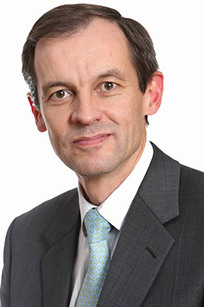Fit for practice?
Workforce shortages are felt throughout the NHS, affecting the quality and scope of services to patients as well as finances. For years, there has been concern about GP numbers, with claims of an impending cataclysm due to early retirement, though these were sometimes based on anecdotal evidence. However, a recent study suggests that the GP workforce could have reached a tipping point.
services to patients as well as finances. For years, there has been concern about GP numbers, with claims of an impending cataclysm due to early retirement, though these were sometimes based on anecdotal evidence. However, a recent study suggests that the GP workforce could have reached a tipping point.
According to the research – by the Nuffield Trust for the BBC – the number of GPs in the UK relative to the size of the population has fallen in a sustained way for the first time since the 1960s. In absolute terms, the number of GPs (excluding locums, registrars and retainers) across the UK fell from around 43,600 in 2014 to 42,100 in 2018. The number of registered patients over that same time period increased from 67.2 million to 70.1 million.
The proportion of GPs across the UK has been rising steadily since 1970, when it stood at 42 per 100,000 population. It reached a peak in 2009 (67 GPs per 100,000) and plateaued at around 65 in the following years before falling sharply to 60 in 2018.
There are variations between the four nations – Scotland has the highest number of GPs per 100,000 population (76 in 2018), while Northern Ireland has 67 GPs per 100,000. Next is Wales with 63 and lastly England with 58.
The Nuffield Trust urges caution when interpreting the figures – questions have been raised over some of the data due to quality issues or changes in sources, for example.
Also, 70.1 million registered patients is clearly greater than the official UK population of around 66 million. The difference could be caused, in part, by so-called ghost patients – those who have died or moved (to another part of the UK and now registered at two practices or abroad) but not yet removed from GPs’ lists.
It should be remembered too that GPs will be paid a capitation fee for all patients on the list, ghost or otherwise.
The Nuffield Trust said the fall in the proportion of GPs reflected not only an increased population, but also inadequate numbers of GP trainees in the past; failure to recruit enough GPs from abroad; and more family doctors taking early retirement. To have kept pace with population growth since 2014, another 3,400 GPs would have been needed.
 BMA GP committee chair Richard Vautrey said GP numbers have been in ‘freefall’ for years as government pledges to boost numbers have fallen flat.
BMA GP committee chair Richard Vautrey said GP numbers have been in ‘freefall’ for years as government pledges to boost numbers have fallen flat.
‘Family doctors are under intense pressure to meet rising demand from a growing population, many of whom are elderly and living with increasingly complex conditions. In many cases, workload has become unmanageable, leading doctors to reduce their hours or retire,’ he said. ‘As more doctors leave the profession, the workload gets heavier still for those left behind, and the situation gets far more serious for patients and staff.’
A recent survey by GP magazine Pulse found that more than half of family doctors were working above safe levels, putting in an 11-hour day on average.
Dr Vautrey continued: ‘Add to this punitive and confusing pension regulation that punishes doctors who take on more work; we have seen a perfect storm brewing for the GP workforce.’
The pension issue is potentially a major headache for the NHS, with some doctors threatening to retire and others considering reducing their workload so they do not have to pay additional tax.
The GP partnership model – where doctors acting as independent contractors ‘buy in’ to a partnership – is deemed too restrictive by many aspiring GPs. It’s difficult to leave a GP partnership, contrasting sharply with their hospital-based colleagues’ ability to move around the NHS with relative freedom.
GPs have pointed out that, as surgeries have expanded to accommodate the wider range of services provided in primary care, the value of premises has risen. As a result, the ‘buy-in’ cost has increased.
In Scotland, steps have been take to address concerns over premises. GPs who own their surgeries have been offered interest-free sustainability loans from a £10m annual fund to ensure they can keep their premises open. GPs who lease their premises can transfer the lease to their health board.
Reduced headcount and an increase in part-time GPs are having a knock-on effect on performance. The latest British Social Attitudes survey showed satisfaction with general practice at 63% – the lowest since the survey began in 1983. General practice is the one area where the annual survey has shown consistently high levels of approval – in 1990 satisfaction with general practice stood at 80% and was still around 74% in 2016 – but the recent sharp decline will serve as a wake-up call to primary care.
For those who told the survey they were dissatisfied with the NHS overall, the length of time it takes to get a GP or hospital appointment was the biggest reason for their discontent, closely followed by lack of staff. The links between these factors will not be lost on NHS managers and GPs.
However, there are signs this dissatisfaction could be turned around. In England, the long-term plan will bring significant additional investment in primary and community care – £4.5bn higher in 2023/24. The funding will be used to tackle demand pressures, expand the workforce and to develop new services.
The NHS is training more GPs – the government had promised an extra 5,000 qualified GPs by 2020 – but there are doubts this will be achieved in the timeframe. In April, however, Health Education England announced that almost 2,600 doctors had entered GP training. The education body said it was on course to hit its target of 3,250 for the year. In 2018, almost 3,500 trainees entered general practice – the highest number in NHS history.
The introduction of primary care networks promises an additional 20,000 primary care staff, including pharmacists, social prescribers and associate physicians in the next five years to take some of the workload off GPs.
NHS England has taken steps not only to increase the number of GPs, but also to free up GP time so they can care for the patients who need them most. For example, NHS England says its Time to care programme has freed up around 500,000 hours or £40m worth of time saved. The programme was scheduled to end on 31 March but has been extended for another three years.
Before April this year, GPs in England and Wales had to buy clinical indemnity insurance for themselves and their staff, and this was often cited as a major reason why young doctors decided against a career in primary care. However, state-backed schemes introduced in both nations means doctors no longer have to pay for the insurance out of their own pockets.
As well as addressing indemnity, the new GP contract for England opens up the possibility for GPs to work with other family doctors, particularly through primary care networks.
The BMA’s Dr Vautrey said: ‘We hope the addition of 20,000 additional practice staff over the next five years will have a real effect in beginning to tackle the workload problems. While these professionals will not replace GPs, they will, where appropriate, see some patients, and allow doctors to prioritise cases where their expertise is needed.
‘While there is clearly much more that needs to be done by government, by utilising these additional resources, and allowing practices to work together via primary care networks, we hope that the pressures currently faced by GPs will ease, persuading more GPs to stick around, and enticing more new recruits to what is one of the most rewarding areas of medicine.’
Productivity and efficiency are central to NHS England’s actions and, with a pro-technology health secretary, there will be more and more interest in the use of technology such as video consultations. Doctors’ leaders remain frosty to some of the new tech-based service providers, but they have welcomed the additional funding, state-backed indemnity and the development of primary care networks.
NHS leaders aim to address young doctors’ concerns, recruit more GPs, introduce technology and develop an alternative workforce to take some of the workload. By doing so, they hope primary care will be more attractive and once again suit patients’ needs.
Nursing registrations increase
While GP numbers are declining, there was better news about nurses, even though there are tens of thousands of vacancies.
The Nursing and Midwifery Council (NMC) said a net 8,000 more nurses, midwives and nursing associates are registered to work in the UK compared with last year – raising the total registered to an all-time high of almost 700,000.
There were 698,237 registered nurses, midwives and nursing associates on the register in March this year, including around 653,000 nurses.
The bulk of the increase is made up of UK-trained professionals – 5,000 more than 2018, while the steady rise in midwife numbers continued with an additional 500 registered over the last 12 months.
The NMC said there had been a jump in the number of professionals from outside the European Economic Area joining the register.
European Economic Area joining the register.
However, more than 11,000 professionals left the register during the year. The main reason was retirement, but almost a third said they left due to workplace stress. The UK exit from the European Union was the top reason for nurses and midwives who trained in other EU countries.
NMC chief executive Andrea Sutcliffe said the NHS had a ‘long way to go’ before it had adequate numbers to provide the best and safest care. ‘And while there has been a drop in the number of people leaving the register, our survey fires yet another warning shot – that the pressures nurses and midwives face are real and must be taken seriously if we are to properly attract, support and retain the workforce we need now, and for the future.’
Related content
The Institute’s annual costing conference provides the NHS with the latest developments and guidance in NHS costing.
The value masterclass shares examples of organisations and systems that have pursued a value-driven approach and the results they have achieved.